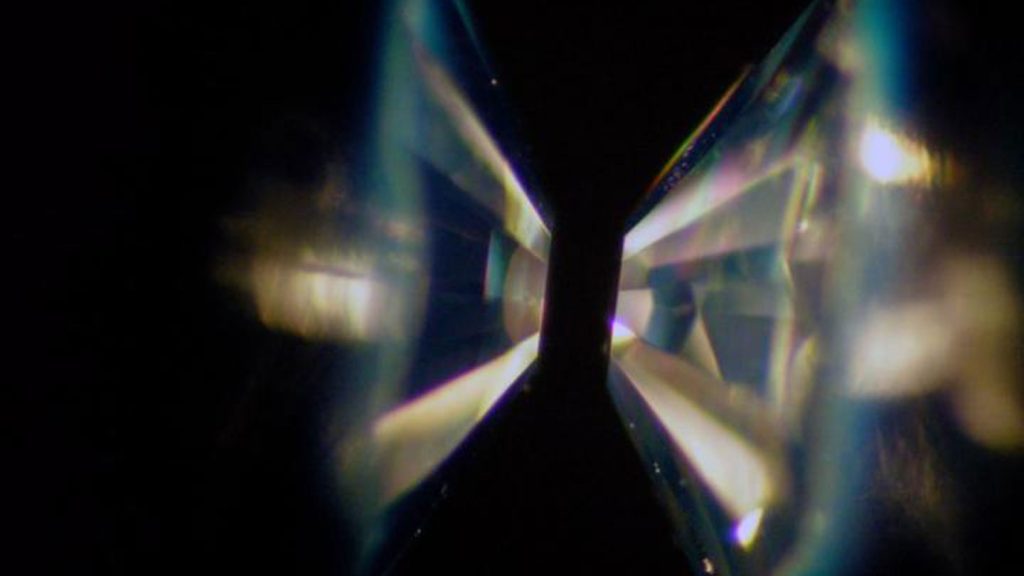Is this the superconductor of scientists’ dreams? A new claim faces scrutiny

LAS VEGAS — It’s a bold claim: The quest to create a superconductor that works under practical conditions is finally fulfilled, a team of researchers says. But controversy has dogged the team’s earlier claim of record-breaking superconductivity, and the new result is already facing extreme scrutiny.
The ultimate test will be whether the result can be confirmed by other researchers, says physicist Mikhail Eremets of the Max Planck Institute for Chemistry in Mainz, Germany. “I repeat it like [a] mantra: ‘Reproduce.’”
Many materials become superconductors, able to transmit electricity with no resistance, provided they’re cooled to very low temperatures. A few superconductors work under warmer conditions, but those must be squeezed to crushing pressures, so they’re impractical to use.
Now physicist Ranga Dias of the University of Rochester in New York and colleagues say they have created a superconductor that works at both room temperature and relatively low pressure. A superconductor that operates under such commonplace conditions could herald a new age of high-efficiency machines, supersensitive instrumentation and revolutionary electronics.
“This is the start of the new type of material that’s useful for practical applications,” Dias said March 7 at the American Physical Society meeting, where he reported the feat.
The superconductor is made of hydrogen mixed with nitrogen and a rare earth element called lutetium, Dias and colleagues report March 8 in Nature. The team combined the elements and squeezed them in a device known as a diamond anvil cell. The researchers then varied the pressure and temperature and measured the resistance to electrical flow in the compound.
At temperatures as high as 294 kelvins (about 21° Celsius or 70° Fahrenheit), the material seemed to lose any electrical resistance. It still required pressures of 10 kilobar, which is about 10,000 times the pressure of Earth’s atmosphere. But that’s far lower than the millions of atmospheres of pressure typically required for superconductors that operate near room temperature. If confirmed, that makes the material much more promising for real-world applications.
The material displayed several hallmarks of a superconductor, the team reports. Not only did the electrical resistance suddenly drop as it became superconducting, but the material also expelled magnetic fields and exhibited an abrupt change in its heat capacity, Dias says.
When the researchers put the squeeze on the material in the diamond anvil cell, it suddenly turned from a bluish hue to hot pink. “I had never seen a color change like this in a material,” Dias says. “It was like, wow.” That color change indicated a shift in the electrical properties of the material as it became a superconductor, Dias says.
This superconductor might be able to escape the confines of a diamond anvil cell, Dias says, opening it up to practical applications. A technique called strain engineering, for example, could mimic the required pressure. In such a process, researchers grow a material on a surface that constrains growth, putting a strain on the material that replicates the effects of externally applied squeezing.
Still, the research faces significant skepticism, in part because of the firestorm over the team’s earlier publication that claimed the discovery of superconductivity in a compound of carbon, sulfur and hydrogen at 15° C (SN: 10/14/20). Editors at Nature retracted that paper, over the objection of Dias and his coauthors, citing irregularities in the researchers’ data handling that undermined the editors’ confidence in the claims (SN: 10/3/22).
Several experts have expressed a lack of confidence in the new results presented by Dias’ group, based on that history. Not only was the previous result retracted, but other researchers were unable to reproduce it, says Eremets, including his own group at the Max Planck Institute. “The main test of validity — reproducibility — was failed, and from my point of view that’s the most important thing.”
The stakes are high. “If it’s true, it’s a great discovery,” says physicist Eugene Gregoryanz of the University of Edinburgh. But he views the researchers with suspicion. “Whether it’s true or not, I guess time will show.”
Others are more positive. “It’s an excellent study,” says materials chemist Russell Hemley of the University of Illinois Chicago. “The data as presented, in terms of evidence for superconductivity, is very strong.” Hemley was not involved with the study but has collaborated with Dias in the past, including on a follow-up to the retracted superconductor paper. Submitted February 16 at arXiv.org, that paper, which has not yet passed peer-review, reports that the previously claimed superconductor does function near room temperature.
The new superconductor is a hydrogen-rich type known as a hydride. Scientists predict that pure hydrogen should be a room-temperature superconductor, but only at extremely high pressures that make it difficult to produce. To lower the pressure, scientists have added in other elements, making hydride superconductors.
In 2015, Eremets and colleagues produced a compound of sulfur and hydrogen that was superconducting up to −70° C, a record high temperature at the time (SN: 12/15/15). A few years later, a compound of lanthanum and hydrogen was found to superconduct under still chilly conditions, but even closer to room temperature (SN: 9/10/18). Both materials require pressures too high for practical use.
It’s difficult to understand how the new superconductor fits in with other hydrides. Theoretical calculations of how similar hydrides behave wouldn’t suggest that such a material would be superconducting at the reported temperatures and pressures, says theoretical physicist Lilia Boeri of the Sapienza University of Rome. “For me, it looks very strange,” Boeri says. “It’s something completely unexpected…. If it’s true, it’s very different from the other hydrides.”